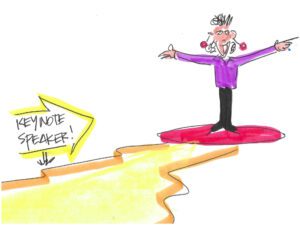Last week I reminded you of the inevitable… that, in the gloriosity of working on your unique, amazing and powerful vision, you will find old thinking patterns lurking in the shadows, just waiting until you’ve had a really long day, or eaten too much sugar, or ran into an ex. They will remind you that,
“You can’t do this, you’re not smart enough, cute enough, disciplined enough.”
Those old outdated beliefs that formed before the age of 15, are just waiting to attach themselves to your leg like shackles, and arrest your development as soon as you let your guard down.
“Now what!”, you exclaim and throw your arms up with an “AAH!”
Stay calm super star. This too will pass; you are equipped to reroute this pesky amygdala. Why not circumvent the old patterns and behaviors by getting to know everything about them which will enable you to change them.
For a moment, I invite you to ask yourself,
“What beliefs do I currently hold about myself or this situation that may stop or slow my progress?”
Make a list.
Some really common beliefs that many of us carry around include things like, “I don’t know enough, I’m not smart enough, I’m too old, I don’t have enough time.” Maybe you even feel like you aren’t valuable or lovable.
Do any of these ring true from your past?
You probably recognize a few of them. Believe it or not, keeping a list of limiting beliefs somewhere and reviewing them from time to time will give you a heads up when your drive is about to stall out. While your focus should definitely be on the positive beliefs that will help you achieve your goals, you should also try to keep an eye out for these pesky beliefs that limit you. By bringing them into your awareness you reduce their ability to undermine your progress.
How can you reroute them and replace them with positive beliefs? Throughout the process of goal getting, you must think of yourself as a detective. Throughout your day, observe and note any time a limiting belief pops up. At those moments, take note of what triggered that old way of thinking. Was it a comment or an assumption about your experience based on your past?
One of the most powerful ways to shift your old beliefs is by re-patterning your brain the moment the old belief emerges. By stopping and imagining yourself literally replacing the old belief in your mind with a new one, and then repeating that new belief to yourself, you will re-pattern the way your brain works. You can also do this before you encounter a situation that you feel might trigger your old beliefs. By repeating to yourself, “I am smart, creative and capable,” before going in for a job interview or “I am enough” when revisiting a situation where your self-esteem felt lagging, you can finally train yourself to overcome these limiting beliefs.
It’s easy to shift your brain patterns if you work at it. In David Eagleman’s book, The Brain, he describes a study about visual spatiality. Subjects were given goggles that reversed what they were looking at. Things that were on the right appeared to be on the left, etc. When people used the goggles for the first time, they got nauseous and broke out in a nervous sweat. However after a few days, their cognitive function adjusted to the new vantage point of right and left and their discomfort stopped. After two more days, their neurons had reconstructed the brain so that this spatial awareness was now the new normal. Eagleman’s study demonstrates that the brain doesn’t care about the actual details of the input, rather it is busy reconfiguring things to efficiently achieve the task at hand. If your brain can reconstruct spatial reality after only two weeks, what else is it capable of reconstructing?
We know that the brain uses more than just vision to construct reality. It fills the gaps between information gathered in the two-dimensional realm so you can use your hand to reach for a glass of water. When your brain is deprived of all sensory input as in a sound deprivation chamber, it will reconstruct reality and start making things up. Eagleman writes, “In fact the brain generates its own reality even before it receives information coming in from the eyes and other senses. This is known as the internal model.”¹ Left to its own devices, your brain will start making things up, so it is critical that you direct your brain to construct the reality you want to create.
To give your brain a roadmap you must create a plan for the future that includes a clear picture of the new you including the feelings you will experience in the new world you’ve imagined. By working on your roadmap every day your brain begins to recognize the paths leading to your goals that allow you to move yourself quickly and efficiently in the right direction. The more often you reinforce your goals with images, feelings and positive beliefs, the deeper you embed them into the workings of your brain.
Jenna wrote to me about the picture of the future she drew and subsequently experienced. “After attending one of your keynotes I admit I was skeptical about the process. Did it really work? I was open to trying the experiment. So, I drew on the right side of my map my husband/partner cooking me dinner, something I wanted but rarely experienced. Without saying a word to anyone about my imagined reality, I came home two nights later to find my husband cooking dinner for me. I thought, ‘Oh perhaps that was just a coincidence’. But it worked time and again when I focused my attention on what I really wanted, wrote it down, drew a picture and assumed positive intent, that this WAS going to happen. Now this process is fully integrated into my everyday planning.
Neurological research tells us that approximately one third of our brain function is automatic, while two thirds is programmable. Instead of using your senses to constantly recreate reality from scratch every moment, your brain adds new sensory information to a model it previously constructed from your past experiences. This updating, refining, and reconstructing is ongoing every minute of every day even though you are totally unaware of it. There are times, under certain conditions, when you can actually see these processes at work.
Now you can see why you sometimes experience circumstances and situations you would never consciously choose. The amygdala, under stress, will do anything to solve the problems you are facing. Its default response is to follow a familiar pattern it knows will make you feel a sense of completion. When you have finished something important, a hit of dopamine rushes through your body. On a chemical level your brain tells the rest of your body, “problem solving feels good, and the quicker you can solve problems the better.” Your brain doesn’t always care if you got the desired result though. Your brain just wants to get to completion, so it will still drop in old negative beliefs for you like “You, didn’t get a call back… See you really aren’t that good! Oh well, job done,” and then boom! it hits you again with another dose of dopamine re-enforcing that limiting belief inside of you.
The good news is that when you understand how your brain works, you can redirect it to solve problems with your new beliefs instead. These positive patterns can replace the old limiting ones allowing you to finally achieve your goals and desires.
Your mission, should you choose to accept it, is to make a list of all the limiting beliefs you hold about yourself or your circumstances. Write about where they came from. Write about the memories of things people said to you or about how you felt when confronted with different life experiences. After you’ve written all of that down then write down a positive belief to replace each negative or limiting one.
Track yourself during your day, and note what triggers the beliefs that are holding you back. When the old way of thinking starts to play like a broken record, stop what you are doing and try a Joe Dispenza technique. Say out loud, “Change!” (I find it helps to do it loudly) then repeat your positive belief to yourself. Next, reward yourself in some way and say “Yes, I did it! Yay!” Activate your inner cheerleader to make this one stick!
I can’t wait to hear how it goes! DM me or put something in the FB group or send me an email. You are fantastic! Know it! Believe it!
Big love,
Patti
¹ David Eagleman, Brain, pg. 53




